Emotional Zones – Creating Different Moods in One Room
Emotional zones are intentional areas within a single room that are designed to evoke specific feelings or states of mind. Instead of treating a space as one uniform environment, homeowners and designers divide it into smaller “mood pockets.” For example, a cozy reading corner with a warm lamp and plush chair encourages relaxation, while a well-lit desk with minimal distractions supports focus. Similarly, a vibrant corner with upbeat décor might spark energy and creativity. This concept allows a room to serve multiple purposes without physical partitions, making it especially valuable in modern homes where open layouts and multifunctional living are common.
Why They Matter
The design of a space has a measurable psychological impact on how people feel and behave. Studies in psychological interior design show that lighting, color, and spatial arrangement can significantly influence mood, productivity, and even social interaction. Creating emotional zones helps individuals align their environment with their daily needs—whether that’s calming down after work, concentrating on a project, or hosting friends.
The benefits go beyond aesthetics:
-
Better focus: Dedicated, distraction-free areas enhance concentration.
-
Deeper relaxation: Comfort-driven zones reduce stress and promote rest.
-
Stronger social interaction: Welcoming areas encourage conversation and connection.
In short, mood-based room design is not just about style—it’s about shaping experiences. By understanding the emotional impact of lighting, colors, and textures, anyone can transform a single room into a dynamic, adaptable space.
Practical Zone Examples in One Room
Living Room
The living room is often the heart of a home, making it the perfect candidate for emotional zoning. One corner can be styled as a relaxation zone with a soft sofa, warm-toned lighting, and textured throws for winding down with a book. Another area can serve as the entertainment/media zone, anchored by a TV or projector, sleek seating, and adjustable task lighting to create an immersive viewing experience. This balance transforms the living room into a multifunctional living space that adapts to both calm evenings and lively gatherings.
Bedroom
Traditionally seen as just a place to sleep, bedrooms now function as dual-purpose sanctuaries. A defined sleep area, designed with muted colors, blackout curtains, and minimal clutter, promotes rest and recovery. In contrast, a small workspace or reading nook can be carved out with a compact desk, ergonomic chair, and brighter lighting to encourage productivity or focus. By clearly separating these zones, you avoid blurring the line between rest and work—supporting healthier routines and mental clarity.
Studio or Open-Plan Room
Studio apartments and open-plan layouts often present the biggest zoning challenges, but they also offer the most creative opportunities. With smart use of rugs, shelving units, or partial screens, one area can become a creative corner filled with inspiring colors and décor, another a work zone with functional furniture, and a third a relaxation space layered with soft lighting and cozy textures. The key is to create visual and emotional cues that subtly shift energy as you move through the room, turning a single open space into a well-orchestrated set of emotional corners.
By experimenting with these room zoning ideas, you as homeowners can enjoy flexible spaces that respond to daily needs—whether it’s unwinding, focusing, or socializing.
Tips for Seamless Transition Between Zones
Designing multiple emotional zones in one room is powerful, but without careful planning the space can feel fragmented or chaotic. The secret lies in creating smooth room transitions that allow each zone to stand out while still feeling like part of a cohesive whole.
Use Visual Cues
Small design choices can help the eye naturally separate areas. Rugs are a classic way to define boundaries without walls, while lighting shifts—such as a floor lamp in one corner and pendant lights in another—signal different functions. Partial screens, open shelving, or even strategic furniture placement can also serve as subtle dividers that guide movement through the room.
Maintain Palette and Texture Harmony
To avoid clashes, keep a sense of continuity in color and material choices. For instance, if one zone uses earthy tones, echo that palette with accent cushions or wall art in the adjacent area. Similarly, complementary textures—such as pairing a smooth leather sofa in the social zone with a soft woven throw in the relaxation zone—help tie the room together without making it monotonous.
Balance the Energy
Each zone should evoke its own mood, but no area should overwhelm the entire room. If a vibrant work corner risks dominating the space, balance it with calm, neutral-toned zones nearby. This ensures the overall atmosphere remains welcoming and versatile.
Technology and Emotional Zones
Modern technology makes it easier than ever to adapt a room’s atmosphere to your needs. With just a few smart devices, you can instantly transform the feel of your space, ensuring that each emotional zone responds to your lifestyle in real time.
Smart Lighting and Voice Control
Lighting is one of the fastest ways to shift mood, and smart lighting systems take this flexibility to the next level. With adjustable color temperatures and dimming features, you can move from a cool, bright workspace in the morning to a warm, cozy relaxation corner at night. Voice control assistants or mobile apps make it simple to switch between presets, allowing effortless ambient control throughout the day.
Smart Speakers and Soundscapes
Sound has a powerful influence on emotions, and smart speakers let you curate audio for each zone. A calm playlist or nature sounds can enhance a restorative reading nook, while upbeat music energizes a fitness or creative area. Some smart systems even let you program soundscapes to sync with lighting, creating a fully immersive environment.
Common Mistakes to Avoid
While creating emotional zones can transform a room, certain design missteps can undermine the overall effect. Being mindful of these interior design mistakes will help keep your space functional, balanced, and inviting.
Overcrowding the Space
It’s tempting to fill every corner with furniture or décor, but too much clutter makes zones feel cramped and chaotic. Instead, focus on a few intentional pieces that clearly define each area while leaving enough open space for movement and flow.
Ignoring Lighting and Color Psychology
Lighting and color are essential for shaping emotions. A poorly lit workspace or a relaxation corner painted in overly stimulating colors can work against your goals. Keep in mind the psychological impact of color and lighting, using warm tones and soft illumination for calming areas, and brighter, cooler tones for zones that require focus and energy.
Creating Too Many Competing Zones
A single room doesn’t need to serve every possible function. Adding too many zones can create confusion rather than comfort. Instead, identify your top two or three needs—such as rest, work, and socializing—and design around them. This ensures each zone has purpose without overwhelming the room.
Final Words
Designing emotional zones is about more than just arranging furniture—it’s about shaping the way you feel and function within a room. By experimenting with lighting, color, and furniture placement, you can create environments that adapt seamlessly to your lifestyle. A single space can be calm and restorative at one moment, then energizing and social the next.
Now is the time to start small—shift a lamp, change a rug, or introduce a new color palette—and watch how the energy of your room transforms. If you’re ready to take it further, explore mood-based décor items or consider professional design consultations to bring your vision to life. By embracing the concept of emotional zones, you’ll not only make your home more functional, but also create a dynamic, personal environment that evolves with you in 2026.












































































































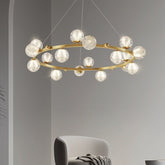

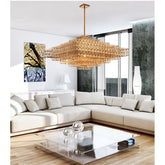





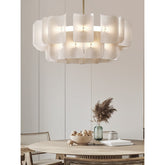

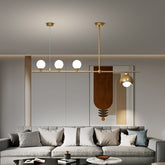

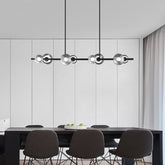



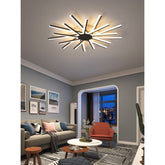






7 Comments
9e8jgz
9e8jgz
mirwzq
2r4adj
y1zagf